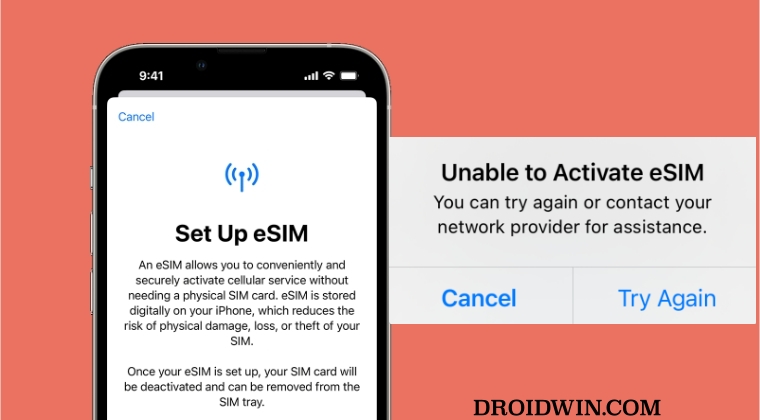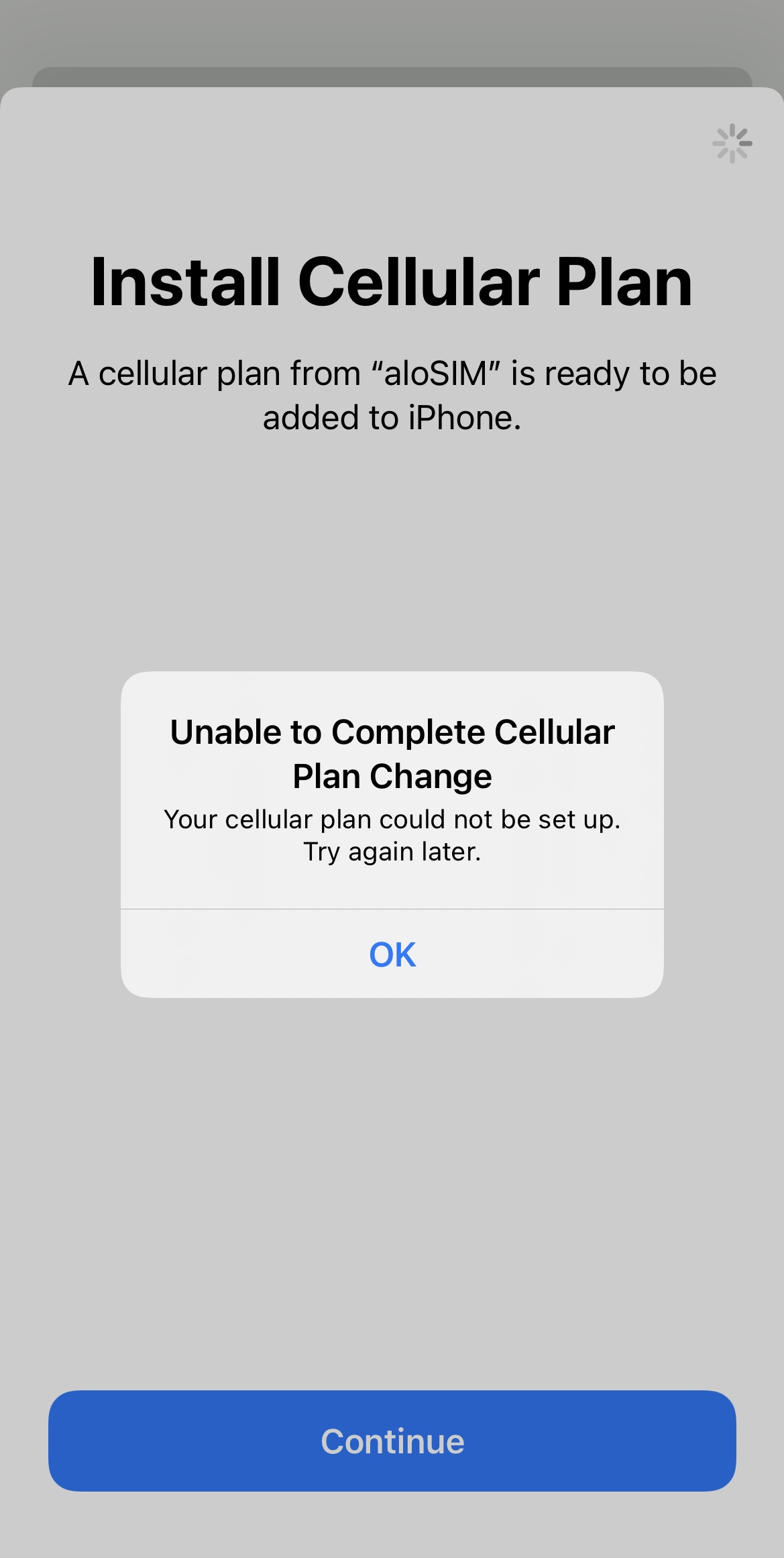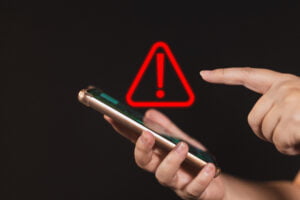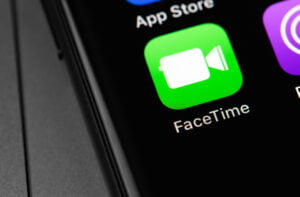Key Takeaways:
- eSIM Activation Issues: The article provides solutions for the “Unable to Activate eSIM” error on iPhones, applicable to various models including the iPhone 14 Pro Max, iPhone 12, and iPhone 11.
- Possible Reasons for Activation Error: The primary causes for this error include incorrect eSIM configuration, issues with the network provider, and software glitches.
- Solution 1 – Remove eSIM: Before activating eSIM on a new device, ensure it’s not set up on another device. If it is, delete it from the old device and set it up again on the new one.
- Solution 2 – Reset Network Settings: If the first solution doesn’t work, resetting the network settings on the iPhone might help. This action will erase saved Wi-Fi networks, VPN settings, and cellular configurations.
- Solution 3 – Contact Network Provider: If the above solutions don’t resolve the issue, reaching out to the network provider for assistance is recommended.
Are you having trouble activating your eSIM on your iPhone? Don’t worry, we’ve got you covered! In this article, we will provide you with two easy solutions to fix the ‘Unable to Activate eSIM’ error on your iPhone. Whether you have the latest iPhone 14 Pro Max or an older model like iPhone 12 or 11, these methods will help you get your eSIM up and running.
If you’re experiencing issues with eSIM activation, the first thing you should do is make sure your eSIM is not already set up on another device. If it is, you’ll need to remove it from the old device before proceeding. Simply access your mobile network settings on the old device, tap on ‘delete eSIM’, and then confirm the deletion. Once you’ve removed the eSIM, you can proceed to set it up on your iPhone again. If the problem persists, you can try the second solution, which involves resetting your network settings on your iPhone. By following these troubleshooting steps, you’ll be able to activate your eSIM and bid farewell to the frustrating error message. Make sure to watch the video for a more detailed guide, and don’t forget to like and subscribe for more helpful content!
This image is property of support.alosim.com.
Possible Reasons for ‘Unable to Activate eSIM’ Error
When trying to activate an eSIM on your iPhone, you may encounter the frustrating ‘Unable to Activate eSIM’ error. There can be several reasons behind this issue, including incorrect eSIM configuration, network provider issues, and software glitches. Understanding these possible causes will help you troubleshoot the problem effectively and get your eSIM activated smoothly.
Incorrect eSIM Configuration
One of the primary reasons for encountering the ‘Unable to Activate eSIM’ error is incorrect eSIM configuration. This can happen if you have not properly set up the eSIM on your device or if there are errors in the eSIM profile. It’s essential to double-check your eSIM configuration to ensure everything is set up correctly.
Network Provider Issues
Sometimes, the ‘Unable to Activate eSIM’ error can occur due to issues with your network provider. This could be a result of temporary network outages, server problems, or issues with the eSIM activation process on their end. If you suspect that the problem lies with your network provider, reaching out to their customer care or support can help you resolve the issue.
Software Glitches
Software glitches can also cause the ‘Unable to Activate eSIM’ error on your iPhone. These glitches can be temporary and can often be fixed by restarting your device or resetting certain settings. It’s important to consider software-related issues when troubleshooting this problem.
Solution 1: Remove eSIM
If you’re facing the ‘Unable to Activate eSIM’ error on your iPhone, there are a few potential solutions to try. The first solution involves removing the eSIM and setting it up again. This can help resolve any configuration issues or glitches that may be causing the activation error.
Step 1: Check if eSIM is already set up on another device
Before removing the eSIM from your iPhone, it’s crucial to check if the same eSIM is already set up on another device. This can cause conflicts and prevent the eSIM from activating on your iPhone. If the eSIM is already in use on another device, you will have to remove it from there before proceeding.
Step 2: Delete eSIM on the previous device
If you find that the eSIM is still active on another device, you need to delete it from that device. This step is necessary to ensure a smooth activation process on your iPhone. Locate the settings on the previous device, find the ‘ESIM’ or ‘Cellular’ section, and delete the eSIM profile associated with your account.
Step 3: Set up eSIM again on your iPhone
Once you have removed the eSIM from any other device, you can proceed to set it up again on your iPhone. Follow the instructions provided by your network provider or scan the QR code they have given you to activate the eSIM. Make sure to carefully enter the necessary information and confirm the activation process. This should resolve the ‘Unable to Activate eSIM’ error and allow you to use the eSIM on your iPhone.

This image is property of i.ytimg.com.
Solution 2: Reset Network Settings
If removing and setting up the eSIM again does not resolve the activation error, you can try resetting the network settings on your iPhone. This solution can help fix any software-related glitches or conflicts that may be preventing the eSIM from activating properly.
Step 1: Open your iPhone settings
To start the network settings reset process, open the settings app on your iPhone. It can usually be found on your home screen and is represented by a gear icon.
Step 2: Go to ‘General’ and scroll down to ‘Reset’
Once you have opened the settings app, scroll down and select the ‘General’ option. Within the General settings menu, scroll down again until you find the ‘Reset’ option.
Step 3: Tap on ‘Reset Network Settings’
After selecting the ‘Reset’ option, you will see various reset options. Look for the ‘Reset Network Settings’ option and tap on it. This will prompt your iPhone to reset all network-related settings to their default values.
Step 4: Enter your passcode
To confirm the network settings reset, you may be required to enter your iPhone passcode. This is an additional security measure to prevent any unauthorized changes to your device settings.
Step 5: Confirm the reset
Once you have entered your passcode, your iPhone will ask you to confirm the network settings reset. This step is crucial as it will erase any saved Wi-Fi networks, VPN settings, and cellular network configurations.
Step 6: Wait for your iPhone to restart
After confirming the network settings reset, your iPhone will automatically restart. This process may take a few minutes, so be patient. Once your iPhone has restarted, you can proceed to set up the eSIM again and check if the ‘Unable to Activate eSIM’ error has been resolved.

This image is property of droidwin.com.
Solution 3: Contact Network Provider
If the previous solutions did not resolve the ‘Unable to Activate eSIM’ error, it’s time to reach out to your network provider for assistance. They have the knowledge and resources to diagnose any network-related issues that may be causing the activation error. Here’s how you can contact them:
Step 1: Reach out to customer care or support
Contact your network provider’s customer care or support service. You can usually find the contact information on their website or in the documentation they provided when you received the eSIM.
Step 2: Provide necessary information and explain the issue
When contacting customer care or support, make sure to provide them with all the necessary information. This may include your account details, device information, and a clear explanation of the ‘Unable to Activate eSIM’ error. The more information you provide, the easier it will be for them to assist you.
Step 3: Follow their instructions to troubleshoot the problem
Once you have explained the issue to your network provider, they will guide you through troubleshooting steps to resolve the ‘Unable to Activate eSIM’ error. Follow their instructions carefully and provide any additional information or feedback they may require. By working closely with your network provider, you can increase the chances of finding a solution to the activation error.

This image is property of 149493502.v2.pressablecdn.com.
Additional Tips to Consider
While the above solutions should help resolve most ‘Unable to Activate eSIM’ errors, there are a few additional tips that can increase the chances of a successful eSIM activation. Consider the following:
Ensure iOS is up to date
Keeping your iPhone’s operating system up to date is crucial for smooth functionality. Make sure you are running the latest version of iOS to avoid any compatibility issues or software glitches.
Make sure your iPhone is compatible with eSIM
Not all iPhone models support eSIM functionality. Check the specifications of your iPhone model to ensure it is compatible with eSIM activation. If your device does not support eSIM, you will not be able to activate it.
Check for network coverage in your area
Sometimes, network coverage can impact eSIM activation. If you are in an area with poor network coverage, it may be challenging to activate the eSIM. Ensure you are in an area with sufficient network coverage before attempting activation.
Restart your iPhone before attempting eSIM activation
A simple device restart can often resolve temporary glitches and improve overall performance. Before attempting to activate the eSIM again, try restarting your iPhone and then proceed with the activation process.
Ensure proper insertion of physical SIM (if applicable)
If your iPhone has both an eSIM and a physical SIM slot, ensure that the physical SIM is inserted correctly. Improper insertion of the physical SIM can sometimes cause conflicts and prevent the eSIM from activating.
Perform a full device restart if all else fails
If you have tried all the solutions and tips mentioned above and are still unable to activate the eSIM, performing a full device restart may be your last resort. This can help clear any persistent software issues and give your iPhone a fresh start. However, keep in mind that performing a full device restart will erase all data on your iPhone, so make sure to back up your important information before proceeding.

This image is property of support.alosim.com.
Conclusion
Encountering the ‘Unable to Activate eSIM’ error can be frustrating, but by following the provided solutions and tips, you can troubleshoot and resolve the issue. Remember to try removing and setting up the eSIM again, reset your network settings, and contact your network provider for assistance if needed. Additionally, ensure that your iOS is up to date, check for network coverage, restart your iPhone before attempting activation, and double-check the proper insertion of a physical SIM if applicable. If the problem persists, don’t hesitate to seek further assistance from customer support. With patience and persistence, you’ll be able to activate your eSIM successfully and enjoy all the benefits it offers.
FAQs
What are the main reasons for the “Unable to Activate eSIM” error on iPhones?
The primary causes include incorrect eSIM configuration, network provider issues, and software glitches.
How can I check if my eSIM is already set up on another device?
Access the mobile network settings on the old device, tap on ‘delete eSIM’, and confirm the deletion.
What steps should I follow if I suspect the error is due to incorrect eSIM configuration?
Remove the eSIM from any other device it’s set up on, then set it up again on your iPhone by following the network provider’s instructions or scanning the provided QR code.
How do I reset the network settings on my iPhone to resolve eSIM activation issues?
Open iPhone settings, go to ‘General’, scroll down to ‘Reset’, tap on ‘Reset Network Settings’, enter your passcode, and confirm the reset.
What should I do if neither removing the eSIM nor resetting network settings resolves the issue?
Contact your network provider’s customer care or support service for further assistance.






